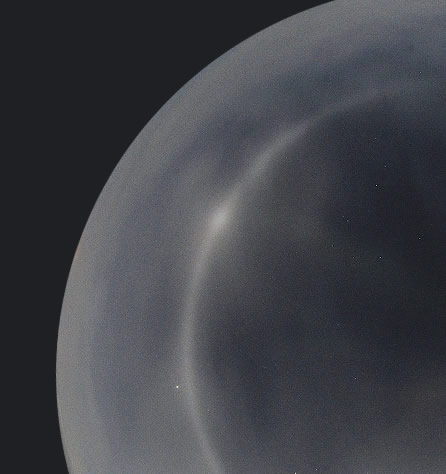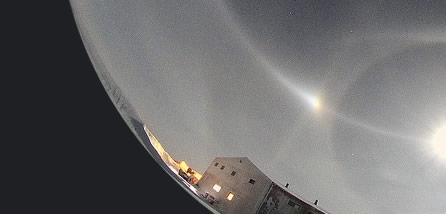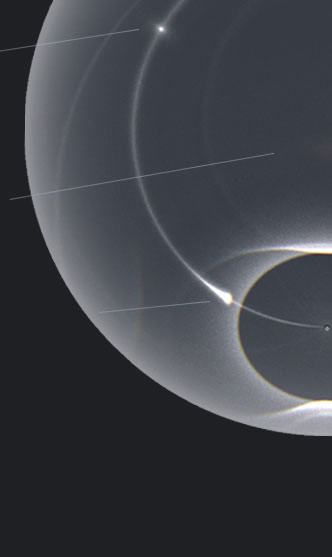| Lunar Halos Alaska North Slope A scene captured by James Helmericks at 70° North in the Colville River Delta. Ice crystals have glinted to create an almost complete paraselenic circle the lunar counterpart of the sun’s parhelic circle. It is studded with four paraselenae or moondogs. Two flank the moon and two much rarer ones are 120° away (one of those is faint). A 22° halo circles the moon and it is topped by an upper tangent arc. Just above that is a trace of a Parry arc. Farther from the moon near the horizon to the left of the building is an infralateral arc . Near to the zenith are hints of a supralateral arc and circumzenithal arc – just possible at this lunar altitude. The straight line passing through the left hand moon dog is probably a light pillar generated by a lamp behind the building. Images ©James Helmericks, shown with permission |














